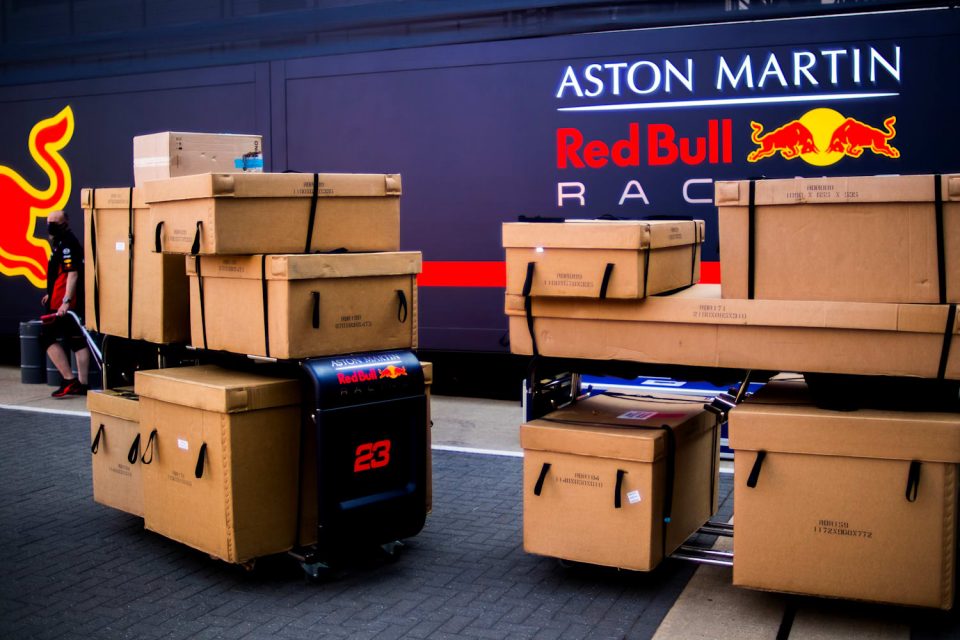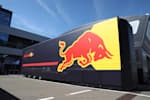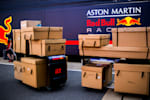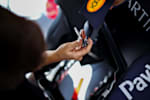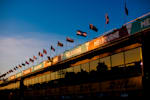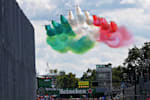It’s difficult to pinpoint the moment when the Formula One calendar changed but, for the sake of argument, let’s say it was in-between the 2003 and 2004 seasons. The 2003 season had 16 races. It started on 9th March in Melbourne and finished on 12th October at Suzuka. To deal with the demands of a tight calendar, the European and French Grands Prix were held on back-to-back weekends – but everything else was properly spaced out. Ten of the 16 races were ‘European’ – i.e. accessible by truck, and there was, of course, no question of running any of the six remaining ‘flyaway’ races back-to-back.
The following year there were 18 races. We had three back-to-backs, including a flyaway double-header in Montreal and Indianapolis. If there’s a point at which the modern era began, the day they announced the 2004 calendar is as good a bet as any.
Fast forward 16 years. The calendar we should have had this year featured 22 races, 13 flyways, nine Europeans, and, crucially, only eight standalone events with the rest being paired in back-to-back weekends. The furthest trek would have been Melbourne-Bahrain, a smidge over 12,000km – though one time zone less than the eight crossed between Baku and Montreal. F1 has become very efficient at travelling great distances in a short space of time, and doing so over and over and over again.
It is, however, a little hard on the knees.
This is the F1 paddock at possibly its most dangerous. Everyone wears hi-vis because there are forklifts buzzing around, trucks coming into the paddock out-front on the start-finish straight, and thousands of people pushing, pulling, lifting and carrying everything from tyre trollies to the coffee machine. Whether the destination is the next race or back to the factory, speed matters.
The pack-down begins the moment you finish setting-up!
Preparation, Preparation, Preparation…
Our Race Team Logistics Manager has been looking after our garage for well over a decade. The key to doing it well, he insists, is being organised.
“The pack-down begins the moment you finish setting-up!” he says. “Once the initial garage build is finished, that’s when you start thinking about taking it all down again. You make sure you have a firm idea of where everything is: all of the individual boxes and containers that you need for the pack-down. Over the years we’ve become better at doing it – but there’s more kit now than ever, so on balance, it’s taking longer.”
Flag-Fall
Pack-up tends to start before the race ends. There are people in every team who don’t have an active role in operating the car, and, once the race begins, they’ll quietly start work behind the scenes, laying out boxes, opening up access to the back of the garage and so on. The idea is to have everything ready so that, the moment the race ends (or, hopefully after a trip to the podium), the crew can leap into action.
The immediate post-race period is useful because the garage techs have the mechanics to help them: once the cars are released from parc ferme by the scrutineers, perhaps an hour later, the mechanics will switch back from general logistics to working on the cars. They have to partially disassemble them, drain fluids, and either roll the chassis back into the transporters or pack it into a freight container, after which they will come back into general circulation.
“At European races, we will want to park a truck in the pit lane in front of the garage – so the sooner we can get the pit box booms down, the better,” says the Race Team Logistics Manager. “That’s one of the things that mechanics will help with before we get the cars back.”
The thing any team hates during pack-down is a logjam. It’s possible to have too many people wanting to work, and not enough work for them to do. This is when the forward-positioning of trucks, containers, flight cases and boxes comes in handy.
“You set your stall out and make sure the trucks are lined-up, everything is open and available to pack,” says the Race Team Logistics Manager. “Flyaways are similar. As soon as we can after the end of the race, we start moving airfreight containers. We use sixteen of them at the moment, and it takes perhaps a couple of hours to get them into position with the forklift – more if they’re stored some distance away or access to the garage is awkward. Likewise, we have the big, metal cages that go into the sea freight containers. Laying everything out probably takes longer than loading them – but there’s no point in bringing anything out of the garage if there’s nowhere to put it.”
Box, Box, Box
It’s a well-oiled machine and a real team effort.
The procedure for pack-down keeps the Team in the same groups that they’ve been in all weekend: Max’s car crew will have one set of responsibilities, Alex’s crew another, then bodywork, engineering etcetera, will all have tasks assigned. It’s done by container, rather than occupation – the people on the pit wall aren’t necessarily responsible for taking down the pit stand – with each group given responsibility for packing the equipment intended for specific containers. To make best use of the space, it won’t be the case that everything in one container relates to one specific area of the garage.
“Each area – particularly on a flyaway – has their own containers to load,” says the Race Team Logistics Manager. “Taking the car crews as an example, once they have the cars loaded into their container, they’ll move onto the next job on their list. Max’s crew will do two containers; Alex’s crew do a couple of containers, the spares guys and the bodywork guys know where their stuff goes, all overseen by the garage techs. It’s a well-oiled machine and a real team effort.”
Another notable effort comes from our pair of trackside IT specialists, who not only bear the significant weight of keeping everything running smoothly through the race weekend, but are also responsible for packing our most delicate cargo: the data centre. Our compact but powerful HPE (Hewlett Packard Enterprise) Simplivity racks are ultimate computing-at-the-edge resource for the travelling team, and are built into allegedly hurricane-proof sealed housings – just in case we’re hit by a pack-down monsoon as they’re tucked into their air freight containers.
The Best of Times; The Worst of Times
Every race, the crew assembles essentially the same garage shell. The rear of the garage – the bit TV doesn’t see in which the workshops are housed – might change shape according to the allocation of garage space but front of house – with a little wiggle room for width – is built exactly the same way every weekend.
This isn’t an aesthetic judgement as much as an operational necessity: things can move quickly at a Grand Prix – no-one has time to figure out where their toolkit has moved this week. But having the same garage every week doesn’t mean the crew does the same pack-down every week. At some circuits the job is straightforward; at others… not so much.
We have extra guys come out from the factory to help with the pack-down in Monaco.
“China is brilliant,” says the Race Team Logistics Manager. “The paddock is massive, so there’s lots of space to lay your stall out. The opposite is Monaco, where the garage is stacked three storeys high, and you have to have a truck go out before another can come in. We have extra guys come out from the factory to help with the pack-down in Monaco – but even with them, we won’t get finished until Monday morning. Spa is pretty good. It used to be shocking but since they built the new garage complex, there’s a lot more space. Anywhere with space makes us happy!”
Logistics 2020
This year, the meticulous plans of the logistics and travel department were thrown in the waste bin when the Australian Grand Prix was abandoned, and it became clear to everyone that the rest of the intended calendar was likely to follow suit.
At the time of writing, five races (including, for logistics purposes, Australia) maintained their original dates, four have been moved back to later dates, one has been brought forward to a new date and eight have been added.
It does, of course, take a toll on the Team. After an experimental triple-header in 2018, F1 agreed to shelf that particular feature, after it proved disproportionately taxing on both cars and crews. It’s back this year as a case of necessity – but the teams are mindful that there’s going to be some tired legs and minds after a 17-race calendar is packed into 24 weeks. There are certain things, however, that make it a little easier.
This Team is a good bunch, it’s a good atmosphere and we’ll get through this busy calendar just fine.
“Winning!” says the Race Team Logistics Manager. “By far our best pack-down of the year came at Silverstone after a fabulous result – that gets everyone buzzing. The rest of the time, everyone’s working hard, they’re away from home for long stretches and it can be tiring – but it’s what we’re paid to do. It’s our job – and in many cases it’s a bit more than a job. This Team is a good bunch, it’s a good atmosphere and we’ll get through this busy calendar just fine.”


